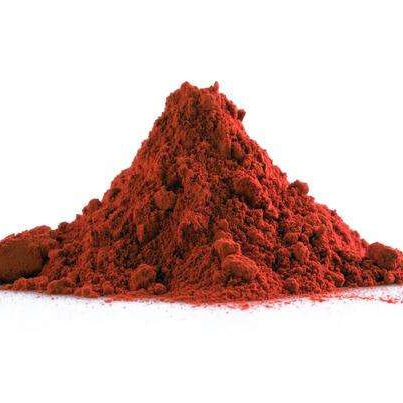
astaxanthin
classification:
vitamin
[Introduction to astaxanthin]
● Alias: 3,3 '- dihydroxy-beta, beta-carotene-4,4' - dione
● English name: 3,3 '- dihydroxy- β,β- carotene-4,4'-dione
● CAS No.: Yes
[Astaxanthin properties]
Astaxanthin is a kind of carotene and a high-level product of carotenoid synthesis. It is dark pink, and its chemical structure is similar to β- Carotene.
[Use of astaxanthin]
antioxidant
The antioxidant activity of natural astaxanthin exceeds that of existing antioxidants. Its ability to scavenge free radicals is: astaxanthin is 6000 times more effective than vitamin C; 1000 times of vitamin E; 800 times of coenzyme Q10; 1800 times of nitric oxide; 3100 times that of natto; 700 times of anthocyanin; yes β- 100 times more effective than carotene; It is 10 times more effective than lycopene; 200 times the efficacy of carotol (lutein); It is 320 times more effective than tea polyphenols; Only algae, yeast and bacteria can produce astaxanthin, and higher animals cannot convert this chemical structure.
Colorant
Astaxanthin is a pigment. Astaxanthin can make salmon, egg yolk, shrimp, crab, etc. appear red. In nature, astaxanthin is produced by algae, bacteria and phytoplankton. Some aquatic species, including crustaceans such as shrimp and crab, eat these algae and plankton, and then store this pigment in the shell, so their appearance appears red. These shellfish are preyed on by fish (salmon, trout, gali), birds (flamingos, ibis), chickens and ducks, and then store the pigment in the skin and adipose tissue. This is why salmon and other animals are red. The professor of Huazhong Agricultural University also confirmed that the red component of natural red core duck eggs is also natural astaxanthin.
key:
astaxanthin
of
and
is
times
the
more
than
effective

hotline:
astaxanthin
[Introduction to astaxanthin]
● Alias: 3,3 '- dihydroxy-beta, beta-carotene-4,4' - dione
● English name: 3,3 '- dihydroxy- β,β- carotene-4,4'-dione
● CAS No.: Yes
[Astaxanthin properties]
Astaxanthin is a kind of carotene and a high-level product of carotenoid synthesis. It is dark pink, and its chemical structure is similar to β- Carotene.
[Use of astaxanthin]
antioxidant
The antioxidant activity of natural astaxanthin exceeds that of existing antioxidants. Its ability to scavenge free radicals is: astaxanthin is 6000 times more effective than vitamin C; 1000 times of vitamin E; 800 times of coenzyme Q10; 1800 times of nitric oxide; 3100 times that of natto; 700 times of anthocyanin; yes β- 100 times more effective than carotene; It is 10 times more effective than lycopene; 200 times the efficacy of carotol (lutein); It is 320 times more effective than tea polyphenols; Only algae, yeast and bacteria can produce astaxanthin, and higher animals cannot convert this chemical structure.
Colorant
Astaxanthin is a pigment. Astaxanthin can make salmon, egg yolk, shrimp, crab, etc. appear red. In nature, astaxanthin is produced by algae, bacteria and phytoplankton. Some aquatic species, including crustaceans such as shrimp and crab, eat these algae and plankton, and then store this pigment in the shell, so their appearance appears red. These shellfish are preyed on by fish (salmon, trout, gali), birds (flamingos, ibis), chickens and ducks, and then store the pigment in the skin and adipose tissue. This is why salmon and other animals are red. The professor of Huazhong Agricultural University also confirmed that the red component of natural red core duck eggs is also natural astaxanthin.
● Alias: 3,3 '- dihydroxy-beta, beta-carotene-4,4' - dione
● English name: 3,3 '- dihydroxy- β,β- carotene-4,4'-dione
● CAS No.: Yes
[Astaxanthin properties]
Astaxanthin is a kind of carotene and a high-level product of carotenoid synthesis. It is dark pink, and its chemical structure is similar to β- Carotene.
[Use of astaxanthin]
antioxidant
The antioxidant activity of natural astaxanthin exceeds that of existing antioxidants. Its ability to scavenge free radicals is: astaxanthin is 6000 times more effective than vitamin C; 1000 times of vitamin E; 800 times of coenzyme Q10; 1800 times of nitric oxide; 3100 times that of natto; 700 times of anthocyanin; yes β- 100 times more effective than carotene; It is 10 times more effective than lycopene; 200 times the efficacy of carotol (lutein); It is 320 times more effective than tea polyphenols; Only algae, yeast and bacteria can produce astaxanthin, and higher animals cannot convert this chemical structure.
Colorant
Astaxanthin is a pigment. Astaxanthin can make salmon, egg yolk, shrimp, crab, etc. appear red. In nature, astaxanthin is produced by algae, bacteria and phytoplankton. Some aquatic species, including crustaceans such as shrimp and crab, eat these algae and plankton, and then store this pigment in the shell, so their appearance appears red. These shellfish are preyed on by fish (salmon, trout, gali), birds (flamingos, ibis), chickens and ducks, and then store the pigment in the skin and adipose tissue. This is why salmon and other animals are red. The professor of Huazhong Agricultural University also confirmed that the red component of natural red core duck eggs is also natural astaxanthin.
Related products
Product message
website

Jiangxi Chenmei Biotechnology Co., Ltd
Address: Electronic Business Incubation Park, Wan'an County, Ji'an City, Jiangxi Province
E-mai:Info@jxchenmei.cn
Tel:0796-5838886
phone:18079659188
whatsapp




